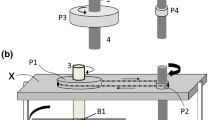Abstract
In industry, due to conservative system design, safety factors associated with uncertainty in the load requirements, discrete availability of commercial rated power, and/or load power variation, most three-phase squirrel-cage induction motors are oversized. Besides the extra capital investment, the oversizing of direct-on-line fixed-speed induction motors can lead to a significant efficiency and power factor reduction. However, the part-load efficiency of oversized motors can still be higher than the full-load efficiency of well-sized smaller motors because, in general, the nominal efficiency increases with the rated power. In this paper, an analysis of potential benefits and drawbacks of motor oversizing is carried out. On the basis of the catalogue technical data provided by one of the largest motor manufacturers for IE1-, IE2-, IE3-, and IE4-class four-pole induction motors, the main results of a simulation-based study on the oversizing energy efficiency and cost-effectiveness are presented. A method to estimate the motor efficiency and power factor for any load level using commercial catalogue data is proposed and applied. Some technical issues associated with motor oversizing are also briefly addressed. It is shown that, if the additional reactive energy consumption due to poorer power factor and the slight speed increase are ignored, for IE1-, IE2- and, to a much less extent, IE3-class motors, oversizing can be cost effective for many motor rated powers, resulting in a higher average efficiency and a lower motor lifecycle cost, as well as in an extended motor lifespan. For most IE3- and IE4-class motors, the oversizing is not cost effective because of the lower nominal efficiency gain when moving to a higher oversized rated power. Additionally, the oversizing impact on the motor energy consumption strongly depends on the load profile of the application. When an old motor fails, it will probably be an IE0- or IE1-class equivalent motor, and this situation provides a golden opportunity for replacing the old motor with a properly sized IE3- or IE4-class motor, which offers significantly higher efficiency for a wide range of loads.


































Similar content being viewed by others
References
Agamloh, E. B., Wallace, A. K., Jouanne, A., Anderson, K. J., & Rooks, J. A. (2005). Assessment of nonintrusive motor efficiency estimators. IEEE Transactions on Industry Applications, 41(1), 127–133.
Alex Chausovsky. (2014). Motor market update. Presentation Slides, Motor Summit 2014, Zurich.
Bortoni, E. C. (2009). Are my motors oversized? Energy Conversion and Management, 50, 2282–2287.
Conrad Brunner. (2014). Efficient electric motor systems. Presentation Slides, Motor Summit 2014, Zurich.
de Almeida, A., Fonseca, P., Ferreira, F.J.T.E., Guisse, F., Diop, A., Previ, A., Russo, S., Falkner, H., Reichert, J., Malmose, K. (2000). Improving the penetration of energy efficient motors and drives. ISR-University of Coimbra, Report prepared for the Directorate General of Transport and Energy, SAVE II Programme 2000, European Commission, Brussels.
de Almeida, A., Ferreira, F., Fong, J., Fonseca, P., (2008). Ecodesign assessment of energy-using products—EuP Lot 11 motors. Final Report for the European Commission, Institute of Systems and Robotics, Univ. of Coimbra.
de Almeida, A., Ferreira, F.J.T.E., Baoming, G. (2013). Beyond induction motors—technology trends to move up efficiency. IEEE Transactions on Industry Applications, 50(3), 2103–2114.
de Almeida, A., Ferreira, F. J. T. E., & Duarte, A. Q. (2014). Technical and economical considerations on super high-efficiency three-phase motors. IEEE Transactions on Industry Applications, 50(2), 1274–1285.
Ferreira, F.J.T.E. (2008). Strategies to improve the performance of three-phase induction motor driven systems. Ph. D. Thesis, University of Coimbra.
Ferreira, F. J. T. E., & de Almeida, A. (2006). Method for in-field evaluation of the stator winding connection of three-phase induction motors to maximize efficiency and power factor. IEEE Transactions on Energy Conversion, 21(2), 370–379.
Ferreira, F. J. T. E., & de Almeida, A. (2008). Novel multi-flux level, three-phase, squirrel-cage induction motor for efficiency and power factor maximization. IEEE Transactions on Energy Conversion, 23(1), 101–109.
Ferreira, F.J.T.E., de Almeida, A. (2009). Overview and novel proposals on in-field load estimation methods for three-phase squirrel-cage induction motors. 6th Inter. Conf. on Energy Efficiency in Motor Driven Systems (EEMODS’09), Nantes.
Ferreira, F. J. T. E., & de Almeida, A. (2012). Induction motor downsizing as a low strategy to save energy. Journal of Cleaner Production, 24, 117–131. Elsevier.
Holmquist, J. R., Rooks, J. A., & Richter, M. E. (2004). Practical approach for determining motor efficiency in the field using calculated and measured values. IEEE Transactions on Industry Applications, 40(1), 242–248.
Hsu, J. S., Kueck, J. D., Olszewski, M., Casada, D. A., Otaduy, P. J., & Tolbert, L. M. (1998). Comparison of induction motor field efficiency evaluation methods. IEEE Transactions on Industry Applications, 34(1), 117–125.
Lu, B., Habetler, T. G., & Harley, R. G. (2006). A survey of efficiency-estimation methods for in-service induction motors. IEEE Transactions on Industry Applications, 42(4), 924–933.
Rita Werle. (2014). Swiss audit program Easy. Presentation Slides, Motor Summit 2014, Zurich, October
Saidur, R. (2010). A review on electrical motors energy use and energy savings. Renewable and Sustainable Energy Reviews, 14, 877–898.
WEG (2013) Website: http://www.weg.net/pt/Produtos-e-Servicos/Electric-Motors/IEC-General-Purpose, and Manager of Marketing & External Logistics Department of WEGeuro-Indústria Eléctrica, S.A. (Portugal).
Author information
Authors and Affiliations
Corresponding author
Rights and permissions
About this article
Cite this article
Ferreira, F.J.T.E., Cisneros-González, M. & de Almeida, A.T. Technical and economic considerations on induction motor oversizing. Energy Efficiency 9, 1–25 (2016). https://doi.org/10.1007/s12053-015-9345-3
Received:
Accepted:
Published:
Issue Date:
DOI: https://doi.org/10.1007/s12053-015-9345-3




